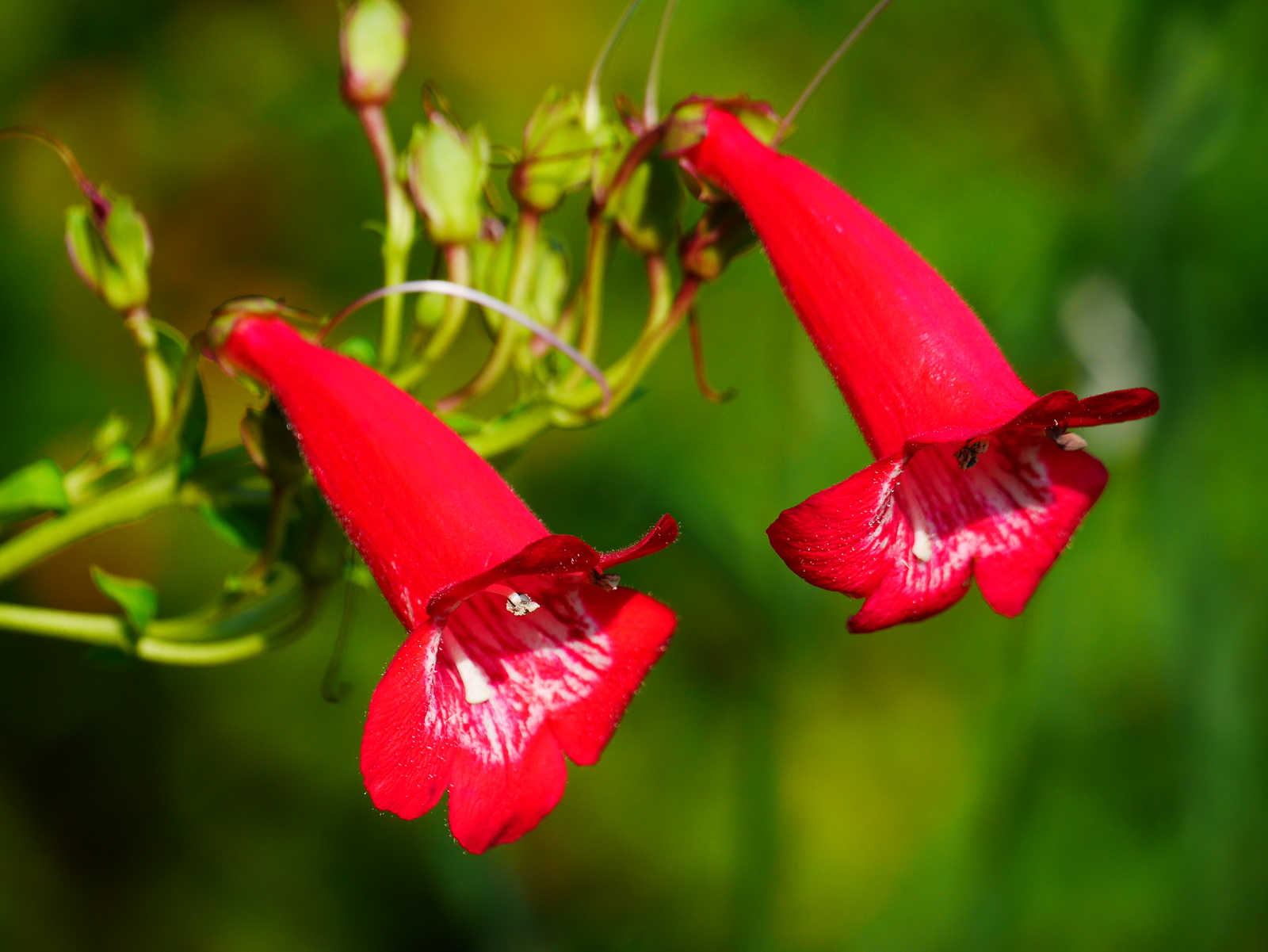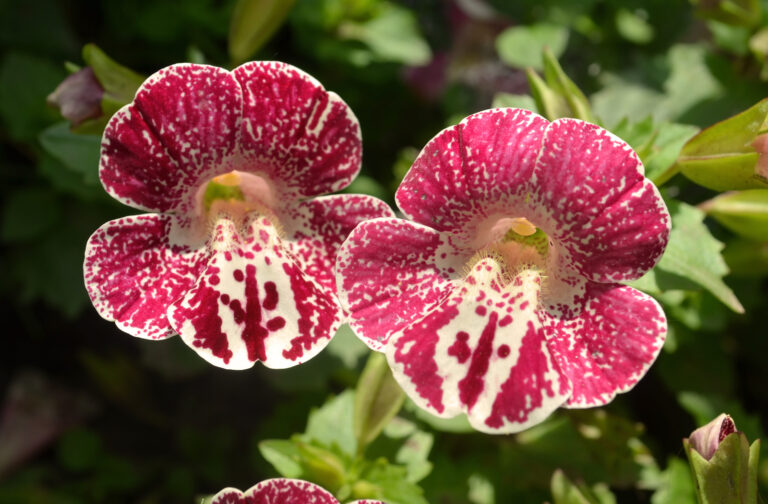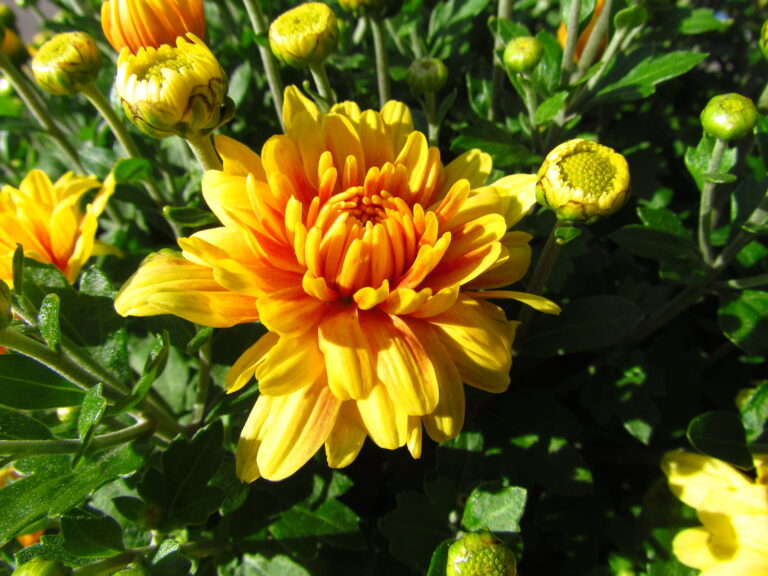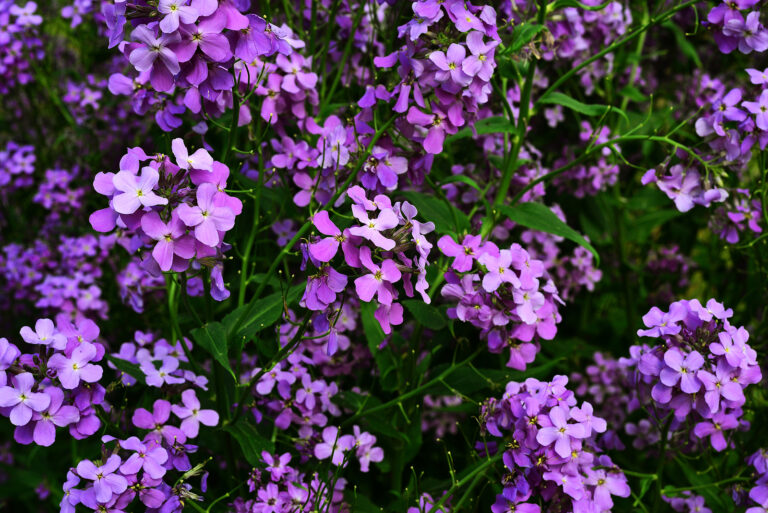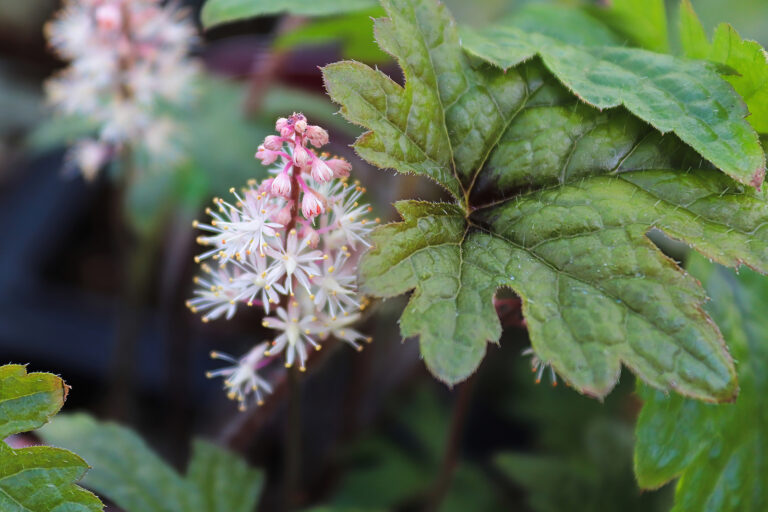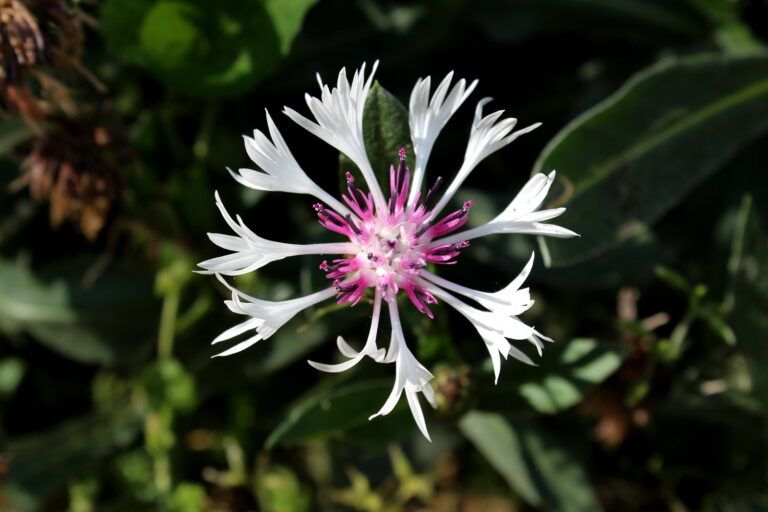How to Grow Penstemon
Penstemons have narrowly bell-shaped flowers that are commonly seen in bright reds and blues, but some are soft pink, salmon, peach, deep rose, lilac, dark purple, and white. Penstemons are native to the American West, ranging from Canada to Mexico.
Penstemons are widely distributed in the wild; some grow on mountains, some in the deserts, others in forest glades, in foothills, and on plains. There are more than 250 species of penstemon. There are scores of hybrids and cultivars.
Penstemons can be difficult to grow if they are not in the right location. Avoid planting penstemons in overly moist or wet soil. Choose a species or cultivar that is right for your region. Growers in cold winter and wet summer locations should choose a species native to your region. Add several shovelfuls of sand to the area where you intend to grow penstemons; this will allow for quick drainage.
Good Products for Garden Care at Amazon:
- Garden Safe Snail and Slug Bait
- Bonide Sulfur Fungicide
- Monterey BT Caterpillar Killer
- Neem Bliss 100-% Cold Pressed Neem Oil
- Safer Brand Insect Killing Soap
- PyGanic Botanical Insecticide
Some penstemons are low and matted, others send up tall flowering stems from basal rosettes, much like foxgloves. In the garden, penstemons are a bright addition to mixed borders.
Penstemons are fairly short-lived, from three to four years. Treat penstemons as biennials or short-lived perennials.
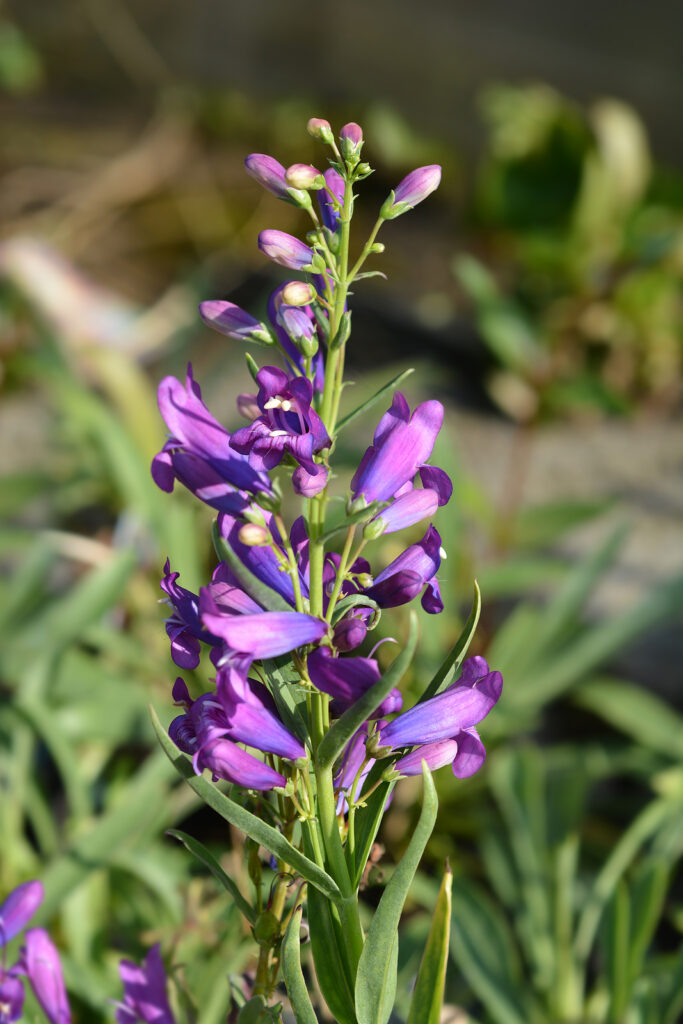
Get to know Penstemon
- Plant type: Perennials and half-hardy annuals
- Growing zones and range: Zones 3 to 9 as a perennial; all zones as an annual
- Hardiness: Tender to half-hardy; cold and heat tolerance varies with the species
- Height and width: 6 to 30 inches (15-76cm), 6 to 18 inches (15-45cm) wide
- Foliage: Stalked or stalkless usually linear to lance-shaped leaves
- Flowers: Narrowly tubular or bell-shaped flowers, usually hooded, on spires
- Flower colors: Blue, purple, red, pink, white, salmon, lilac, peach
- Bloom time: Late spring through summer
- Uses: Mixed borders, native plant gardens
- Common name: Bearded-tongue, Penstemon
- Botanical name: Penstemon spp.
- Family: Scrophulariaceae
- Origin: Plains, subalpine, and alpine regions in North and Central America
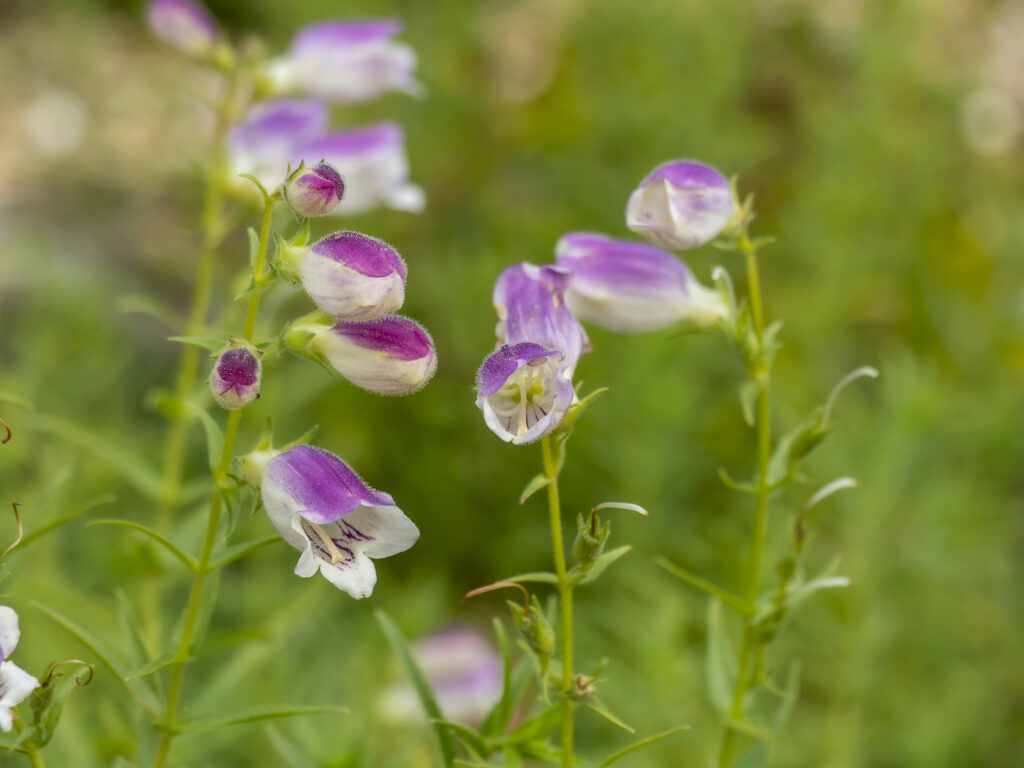
Where to plant Penstemon
- Grow penstemon in full sun; grow in part shade where summers are hot.
- Plant penstemon in average to poor, loose, fast-draining soil.
- Penstemon prefers a soil pH near 7 (neutral).
Penstemon uses and companions
- Grow large Penstemon in a border or as bedding; grow smaller ones in a rock garden.
- Plant Penstemon in drifts in beds and borders or in a cottage or informal garden.
- Good garden companions for Penstemon include Artemisia, Coreopsis, Echinacea, Gypsophila paniculatra, Nepeta, Oenothera, Scabiosa caucasica.
When to plant Penstemon
- Set container-grown plants in the garden in late spring or autumn.
- Start seed indoors in late winter or early spring.
- Sow seeds outdoors in the fall or before the last frost in early spring.
- Set plants in the garden after all danger of frost has passed.

Planting and spacing Penstemon
- Sow seed indoors in small pots filled with moist potting soil; sow seed 1/8 inch deep.
- Freeze seeds of perennial varieties in an airtight container for 4 weeks before sowing.
- Keep planted seeds at 55° to 65°F (12.8°-18°C) until seeds germinate, usually in 18 to 36 days.
- Keep seedlings in a sunny window or below fluorescent lights until 4 to 6 inches (10-15cm) tall; then harden off and plant out or pot up.
- Sow seeds outdoors in nursery beds 1/8 inch deep and 3 inches (7.6cm) apart.
- Thin or transplant seedlings to their permanent spacing when they are 4 inches (10cm) tall.
- Space penstemon 6 to 18 inches (15-45cm) apart.
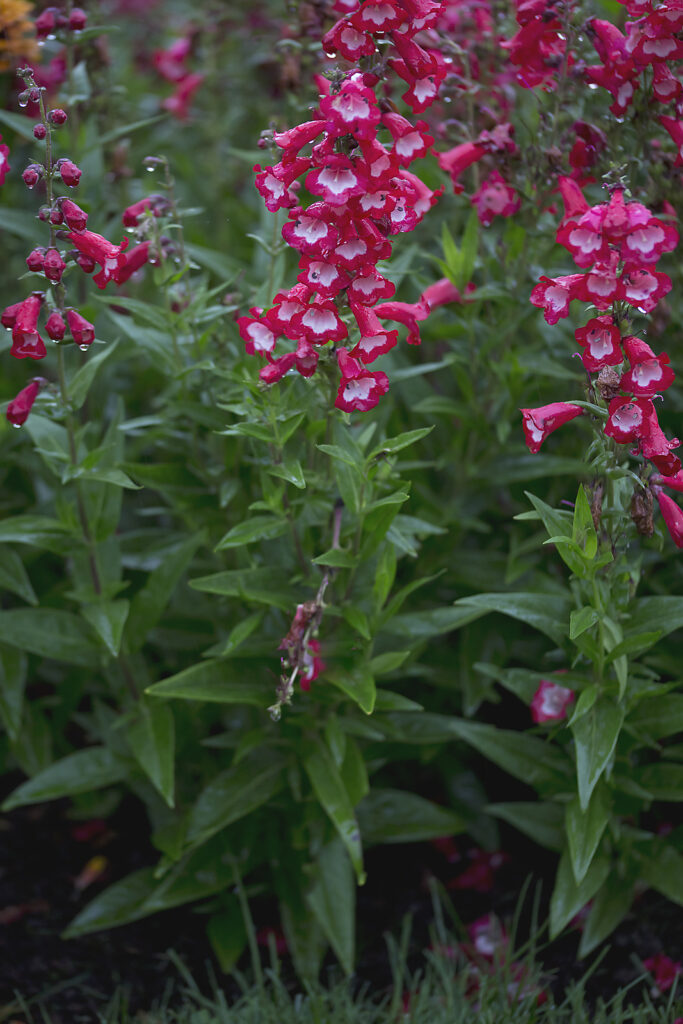
How to water and feed Penstemon
- Keep the soil evenly moist until penstemon is established; when established, mature penstemon can take moderate water and will be drought tolerant. Do not overwater penstemon.
- Keep Penstemon on the dry side in winter.
- Lightly fertilize penstemon at planting time and during the growing period.
- Fertilize penstemons with an all-purpose or high-phosphorus fertilizer.
Penstemon care
- Trim spent blooms to encourage new blooms.
- Stake tall penstemon with slim stakes if plants flop or lean.
- Mulch plants in dry weather with 2 inches (5cm) of aged compost or chopped leaves.
- Protect penstemon in cold winter regions by mulching crowns with 3 inches of chopped leaves or straw. Pull back the mulch in spring after all danger of frost is past.
- Penstemon that is overwatered or in wet soil will be prone to root rot and black spot.
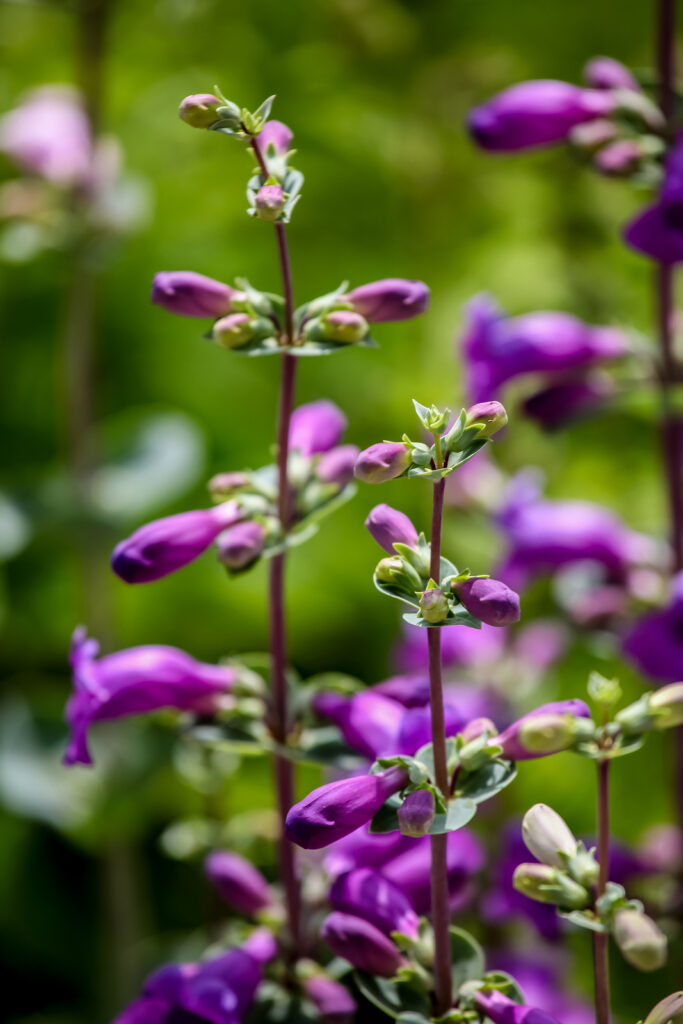
Penstemon propagation
- Propagate penstemon from seed (see above), cuttings, or division.
- Penstemon seeds germinate in 10 to 15 days at 55° to 75° (13°-24°C).
- Take 4 to 6-inch (10-15cm) cuttings in summer. Root cuttings in a mix of sand and pet in partial sunlight. Protect cuttings started in late summer or autumn through the winter; set them in a cold frame or plastic tunnel.
- Divide an established plant into two new clumps when the plant is crowded. Divide penstemon in spring when new growth begins.
Penstemon varieties to grow
- There are many penstemon species and many more hybrids.
- Penstemon barbtus, common beardtongue, beardlip penstemon. Grows 18 to 48 inches (45-120cm) tall; native to western United States and Mexico; ‘Albus’ bears white flowers, ‘Coccineus’ produces red flowers, ‘Elfin Pink’ bears pink flowers. Hardy to -30°F (-34°C).
- P. campanulatus is a tender perennial, bears violet or rose-purple flowers.
- P. cardinalis, cardinal penstemon bears deep red flowers on 3-foot-tall (.9m) stems.
- P. digitalis, foxglove beard tongue, bears panicles of white flowers; cultivar ‘Husker Red’ has leaves that are maroon-red when young and white flowers tinged with pink.
- P. heterophyllus, Royal penstemon, bears deep blue-purple flowers; evergreen in Zone 9. Hardy to 0°F (-18°C).
- P. hirsutus, native to northeastern United States, grows to 24 inches (61cm); cultivar ‘Pygmaeus’ grows to 4 inches (10cm) tal and wide, bears maroon-purple-tinged leaves.
- P. hybrids, penstemon hybrids are perennial in zones 7-10; treat hybrids as biennials or short-lived perennials. Hybrids include ‘Apple Blossom’ with pink flowers, ‘Blackbird’ which is dark maroon, ‘Firebird’ which has scarlet flowers, ‘Garnet’ with wine red blooms, ‘Hidcote Pink’ with coral pink flower, ‘Midnight’ with dark bluish-purple blooms, and ‘Sour Grapes’ which has a combination of violet and metallic blue flowers. Hardy to 15°F (-9°C).
- P. pinifolius has needlelike leaves, grows to 18 inches (45cm) tall with scarlet flowers,
- P. smallii, Small’s penstemon, is native to the eastern United States, long rose- to lilac-pink flowers with white stripe throats.
Penstemon frequently asked questions
Q: How do I get Penstemon to germinate indoors?
A: Penstemon must have a cool (55F) place to germinate indoors. If conditions indoors are warmer, start seeds outdoors. Penstemon grows best in cool climates in light, humus-rich, moist soil.
Q: What caused my penstemon to wilt and die?
A: A fungal disease can cause penstemon plants to wilt and die. Usually, the tips of branches turn black instead of forming flower buds. Be sure you grow penstemon in dry, well-drained soil in full sun.

